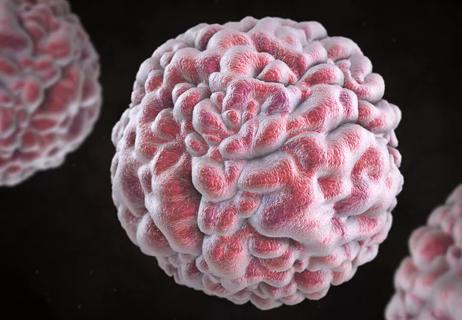5 tips to prevent spreading this tough virus

Noroviruses are as easy to spread and hard to kill as they are unpleasant to experience. If you or a family member have had norovirus — one of the most common causes of acute gastroenteritis outbreaks, often mislabeled as “stomach flu” — you know that’s saying something.
Advertisement
Cleveland Clinic is a non-profit academic medical center. Advertising on our site helps support our mission. We do not endorse non-Cleveland Clinic products or services. Policy
How can you avoid going through it again? Start with these tips from family medicine physician Matthew Goldman, MD, to clean up after a bout of norovirus.
You can catch norovirus from contaminated surfaces, and many disinfectants won’t kill it. Alcohol doesn’t kill norovirus. Use bleached water. The CDC recommends a solution that contains anywhere from 5 to 25 tablespoons of household bleach per gallon of water or other disinfectant approved by the Environmental Protection Agency. Stainless steel and similar surfaces need less, while more porous surfaces need more. If you don’t want to mix your own, shop for bleach-based cleaners.
Use rubber gloves or disposable latex or vinyl gloves. This will help protect you not only from the bleach but also from the norovirus itself, which can hang around on surfaces for days to weeks. Wear a protective mask for safety — and be sure to air out the room when you finish cleaning.
That includes the toilet, the floor, all counters, doorknobs, light switches, telephones, remote controls — you name it. For the best results, let the bleach water or cleaner sit on the surface for at least 5 minutes before wiping it clean with paper towels or other disposable products. In addition, you may want to steam clean upholstered furniture.
Advertisement
Use gloves to handle soiled sheets, towels and clothes, and keep them separate from other laundry if possible. Wash everything in very hot water. For whites or light clothing you aren’t concerned about lightening, add a little bleach. Wash the items with detergent at the maximum available cycle length, then machine dry them.
Washing your hands is a good practice both during and after any illness, particularly a hearty one like norovirus. Be sure to wash hands thoroughly for at least 20 seconds after cleaning, too, so all your hard work doesn’t go to waste.
Advertisement
Learn more about our editorial process.
Advertisement

Start with common sense — and wash your hands

The short answer from a family medicine specialist

Most recommended precautions center around minimizing bruising or swelling

Even one drink can have an impact on your cognitive function leading to slurred speech, blurred vision and impaired memory

Understand who may (and may not) benefit

Lorem ipsum dolor sit amet. Et odio Quis vel ipsam omnis eum alias deleniti et placeat impedit non voluptas galisum hic autem enim et cupiditate aliquid. Est beatae quidem non facilis autem ut commodi nisi aut tempore rerum et dolores voluptatem cum enim optio id sapiente quasi. Ad laboriosam officiis 33 cupiditate sequi ea voluptatum consectetur qui necessitatibus voluptate et quasi doloremque et facere explicabo quo explicabo officia

Type 2 diabetes isn’t inevitable with these dietary changes

Applying a hot or cold compress can help with pain